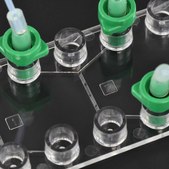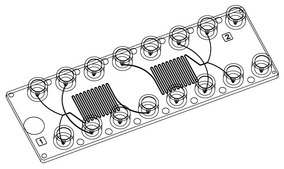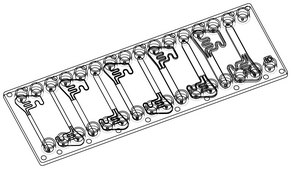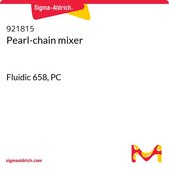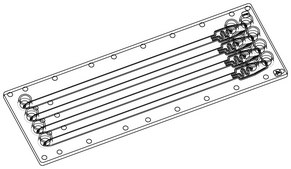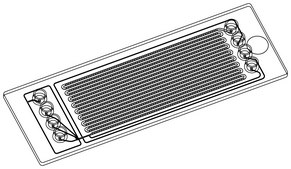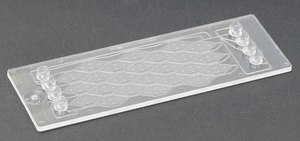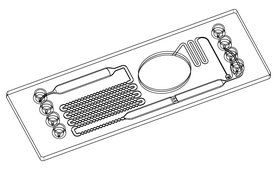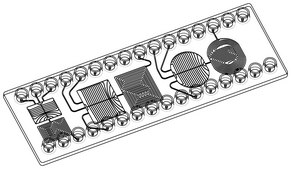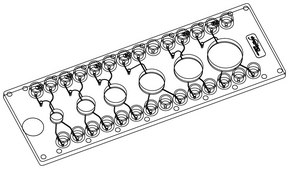Imprint® DNA Modification Kit (MOD50) Protocol
- Product Description
- Kit Components
- Storage/Stability
- Workflow
- Product Profile
- Procedure
- Troubleshooting
- Frequently Asked Questions
- Materials
- Materials Required Not Provided
- References
Product Description
The Imprint® DNA Modification Kit provides the reagents needed for bisulfite conversion and post-modification clean-up of DNA samples in less than 2 hours. Once treated, sample DNA is ready for downstream analyses, such as bisulfite sequencing or methylation specific PCR (MSP), which allows for discrimination of methylated and unmethylated DNA.
It has been well demonstrated that DNA methylation plays an important role in the regulation of gene expression. At any given time about 70% of all CpG dinucleotides in the mammalian genome are methylated.1 Hypo- and hyper-methylation across the genome contribute to changes in gene expression. Determining the methylation status of DNA is an important tool in epigenetic studies.2,3
The Imprint® protocol allows the user to selectively perform DNA modification such that unmethylated cytosines are converted to uracil, while the methylated cytosines remain unchanged. For optimal modification the DNA quantity should be in the range of 50-200 ng, but DNA ranging from 0.1 ng to 1 µg has been used successfully. The modified DNA generated from the our Imprint® DNA Modification procedure is suitable for use in bisulfite sequencing, MSP, pyrosequencing and methylation microarrays.
Kit Components - Sufficient for 50 Reactions
| Reagent | Catalog Number | 50 Rxn |
|---|---|---|
| DNA Modification Powder | D6943 | 5 vials |
| DNA Modification Solution | D7068 | 6.5 mL |
| Balance Solution | B5811 | 0.5 mL |
| Capture Solution | M6695 | 20 mL |
| Cleaning Antibody | M6945 | 3.5 mL |
| Elution Solution | M6820 | 1.5 mL |
| Spin Column* | S2697 | 50 each |
| Capless Collection Tube, 2mL | C3368 | 50 each |
| Collection Tube, 1.5mL | T3566 | 50 each |
Storage/Stability
All components can be stored at room temperature. Each vial of DNA Modification Powder is sufficient for ten DNA modifications. Once dissolved, the solution can be stored at -20 °C for one week, kept away from light. Before use, the frozen solution must be thawed at room temperature and vortexed for two minutes.
Workflow
Product Profile
The Imprint® DNA Modification Kit contains all reagents required for the bisulfite conversion of DNA. DNA denaturation and bisulfite modification are carried out simultaneously. In the modification process, bisulfite reacts specifically with single-stranded DNA to deaminate the cytosine, creating a uracil residue. The unique DNA protection reagents in the modification buffer prevent chemical and thermophilic degradation of DNA in the bisulfite treatment. The Capture Solution enables the DNA to tightly bind to the column filter. This allows for the effective removal of residual sodium bisulfite and salts. The eluted modified DNA can be used immediately, or stored at –20 °C for up to 2 months.
Reagent Preparation
- Ethanol-diluted Cleaning Solution - add 8.2 ml of absolute ethanol to the bottle and mix.
- 90% Ethanol Solution - add 500 µL of water to 4.5 ml of absolute ethanol.
- Balance/Ethanol Wash Solution - add 10 µL of Balance Solution to 1.1 ml of 90% Ethanol.
Procedure
The Imprint® protocol offers the flexibility of either a One-Step or a Two-Step Modification procedure. The One-Step Modification is included as a more convenient procedure to be used with higher DNA input (10 ng to 1 µg).The Two-Step Modification procedure is recommended for low DNA input (100 pg to 10 ng). A BSA solution using Catalog Number B8667 (20 mg/mL) diluted to 0.5 mg/mL (12.5 µL BSA to 487.5 µL water) can be used as a carrier. The BSA-water solution will improve DNA recovery with low input concentrations.
One-Step Modification Procedure
- Add 1.1 ml of DNA Modification Solution to 1 vial of DNA Modification Powder. Vortex the vial for 2 minutes or until the solution is clear. Examine the vial for any particles than may not be dissolved. If particles are present then incubate the vial at 65 °C for 2 minutes and vortex briefly. Add 40 µL of Balance Solution and vortex briefly.
- Add 10 µL of DNA to a 1.5 ml micro-centrifuge tube. Add 110 µL of the solution from Step 1 into the tube. Vortex briefly. Incubate the tube at 99 °C for 6 minutes.
- After the incubation in step 2, immediately follow with incubation at 65 °C for 90 minutes and then proceed to the post modification DNA clean up.
Two-Step Modification Procedure
- Add DNA sample to a 1.5 ml micro-centrifuge tube and adjust the total volume to 24 µL with water or with prepared 0.5 mg/mL BSA-water solution. Add 1 µL of Balance Solution. Vortex and incubate the sample at 37 °C for 10 minutes.
- Add 1.1 ml of DNA Modification Solution to 1 vial of DNA Modification Powder, Vortex the vial for 2 minutes or until the solution is clear. Examine the vial for any particles than may not be dissolved. If particles are present, incubate the vial at 65 °C for 2 minutes then vortex briefly. Add 40 µL of Balance Solution and vortex briefly.
- Add 125 µL of the prepared solution from step 2 into the DNA sample after Step 1 incubation. Vortex and incubate at 65 °C for 90 minutes.
Post Modification DNA Clean Up
- Place a Spin Column into a Capless Collection Tube-2ml for each sample that was modified.
- Add 300 µL of Capture Solution to the Spin Column and allow the solution to sit on the column for 1 minute.
Note: Always cap the Spin Columns before placing them in a microcentrifuge. - Add the modified DNA solution from step 3 of the DNA Modification procedure utilized onto the Spin Column already containing the Capture Solution. Centrifuge the column at 12,000 x g for 20 seconds. Discard the flow-through.
Note: All centrifugations are at 12,000 x g - Add 200 µL of the Ethanol-diluted Cleaning Solution to the Spin Column and centrifuge for 20 seconds.
- Add 50 µL of the Balance/Ethanol Wash Solution to the bottom of the spin column. Ensure that air bubbles are not impeding liquid flow to the column filter. Incubate 8 minutes at room temperature. After incubation, then centrifuge for 20 seconds and discard the flow-through.
- Add 200 µL of 90% Ethanol Solution to the Spin Column and centrifuge for 20 seconds and discard the flow-through.
- Add 200 µL of 90% Ethanol Solution to the Spin Column and centrifuge for 40 seconds. Discard the Capless Collection Tube, 2 ml and place the Spin Column into the 1.5 ml Collection Tube.
- Add 8-20 µL of Elution Solution to the bottom of the Spin Column. Allow the solution to incubate for 1 minute and then centrifuge for 20 seconds. Remove the Spin Column and discard it. The eluted solution is the modified DNA. The modified DNA is now ready for downstream testing or it may stored at –20 °C for up to 2 months.
Figure 1 Bisulfite modification was performed on decreasing concentrations of human genomic DNA using Imprint® MOD50 and kits from two other suppliers. Methylation specific PCR (MSP) was then performed on all samples using β-Actin gene specific primers (109 bp amplicon). For all suppliers lanes from left to right are 100 ng, 10 ng, 1 ng, 100 pg, 50 pg and no sample respectively. Suppliers C and D (not shown) have no product at 50 pg. These results demonstrate the superior sensitivity of the Imprint® kit relative to other suppliers.
Troubleshooting
| Observation | Cause | Recommended Solution |
|---|---|---|
| DNA is poorly modified | The starting DNA is not purified or fragmented | Make sure the DNA A260/280 ratio is between 1.6-1.9 The DNA can be checked for degradation by gel electrophoresis. Start the analysis with quality DNA. |
| Insufficient DNA quantity | Increase the starting DNA to the recommended amount. | |
| The DNA template contains high GC content or secondary structure | Increase bisulfite reaction time to 150-180 minutes. | |
| Insufficient DNA denaturation | Ensure that sufficient Balance Solution is added into the sample | |
| Incorrect Temperature | Check the incubation temperatures | |
| Insufficient DNA Cleaning | Ensure that sufficient Balance Solution is added into 90% Ethanol | |
| Incorrect storage of the DNA Modification Powder/ DNA Modification Solution/Balance Solution mixture | Ensure the mixture is stored at –20 °C and is not more than 1 week old. | |
| Elution Contains Little or No DNA | Low quality starting DNA | Verify that the DNA is degraded by gel electrophoresis. |
| Capture Solution is not added into the sample | Add Capture Solution as indicated in step 2 of the Post Modification DNA Clean Up. | |
| Ethanol-diluted Cleaning Solution is prepared with 70% ethanol and not absolute ethanol | Ensure that the appropriate volume of absolute ethanol is added to Cleaning Solution before use. | |
| Balance/Ethanol Wash Solution Preparation is incorrect | Refer to Reagent Preparation section. | |
| The column is not washed with 90% ethanol | Ensure the wash solution is 90% ethanol | |
| Sample is not completely passed through the filter | Purify the DNA before modification and increase the centrifuge time to 1 minute for all centrifugation steps | |
| Elution Contains both Unmodified and Modified DNA | The amount of DNA is out of the recommended range | Adjust the amount of starting DNA into the range 50-200 ng |
| Template contains high GC content | Increase the bisulfite reaction time to 150-180 minutes |
Frequently Asked Questions
What is the difference between the one-step DNA modification and the two-step DNA modification?
In the one-step DNA modification, DNA is denatured by heating, which allows DNA denaturation and bisulfite modification to be carried out simultaneously. Because one-step DNA modification may increase DNA degradation, the procedure is best suited for higher DNA input (10 ng to 1 µg). In the two-step DNA modification, DNA is denatured chemically followed by bisulfite treatment. This procedure is recommended for lower inputs (100 pg to 10 ng). Both kits are suitable for modification using DNA isolated from various sources.
How much starting DNA is required for DNA modification with this kit?
The starting DNA required for DNA modification can be as low as 50 pg. The signal of the modified DNA can be detected with real-time PCR.
Why is only 90 minutes required for DNA modification?
With our unique modification composition, 90 minutes is sufficient for more than 99% C-U conversion while DNA degradation is greatly prevented. We have observed that increase in modification time did not significantly increase C-U conversion, while yield of modified DNA was significantly reduced most likely due to increased DNA degradation.
How long can the modified DNA be stored?
The modified DNA generated with this kit can be stored for 2 months at –20 °C, 6 months at –80 °C.
Can the kit be used for modifying DNA isolated from formalin-fixed and paraffin-embedded (FFPE) samples?
Yes. However, it is important to note that some fixation protocols severely degrade DNA. Therefore we recommend the user attempt to amplify the gene of interest before bisulfite treatment. If the gene can be amplified, we recommend the two-step protocol for FFPE samples. The Imprint bisulfite modification kit includes DNA stabilizing reagents that minimize sample degradation.
Materials Required Not Provided
- E7023
- W4502
Precautions and Disclaimer
This product is for research use only. It is not intended and should not be used for any human or animal therapeutic or diagnostic purposes. Any such unauthorized use will be in violation of proprietary rights of Epigentek Group Inc. Please consult the Safety Data Sheet for information regarding hazards and safe handling practices.
Imprint is a registered trademark of Merck KGaA, Darmstadt, Germany and/or its affiliates.
References
To continue reading please sign in or create an account.
Don't Have An Account?